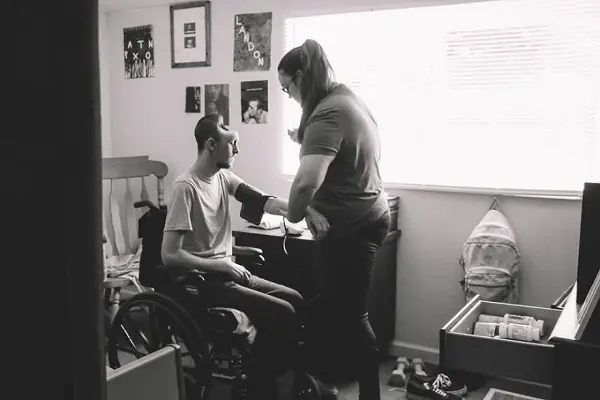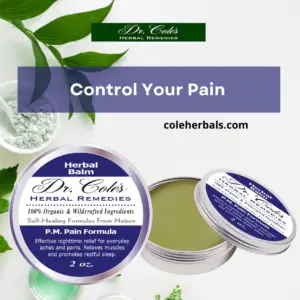
PHOTO: Endres Photography, Facebook
Everybody knows by now that energy drinks are not the healthiest options for beverages. Besides unnaturally high amounts of caffeine, Red Bull, Monster, and other popular drinks contain high levels of sugar, high fructose corn syrup, and artificial sweeteners, as well as too much of the amino acid taurine, along with artificial colors and flavors.
Many also include herbs and artificial vitamins that may create a dangerous cocktail when mixed with all of the other ingredients. It is not surprising that energy drinks are quite capable of causing heart palpitations, tremors, chest pain, dizziness, numbing and tingling of the skin, agitation, and stomach issues as possible side effects.
But are there worse things that can be caused by energy drinks? A man named Austin and his wife Brianna are now claiming to have suffered one of the most high-profile and gruesome health cases attributed to energy drinks in recent memory, in a now-deleted Facebook post that has gone viral and been reported on by major news outlets.
Brianna shared online that her husband’s hectic work schedule (perhaps intensified while she was pregnant with their child) drove him to misuse energy drinks, and this caffeine overdose changed his life, altering his physical appearance forever.
One day changed everything for Austin’s whole family, Brianna said.
“I never imagined as I went to sleep that night, that my whole world would be shattered within hours,” she wrote.
That seemingly ordinary morning Brianna said she woke up to bad news that Austin was in a hospital preparing for surgery after suffering a brain hemorrhage.
The surgery left him unrecognizable with tubes and machines hooked up to him, and his wife and his parents left distraught waiting to see if he was going to wake up.
“Watching this family — my new family, who I have grown to love and be a part of, be so shattered and broken…that is the worst feeling I have ever felt,” Brianna writes.
The following days weren’t any better according to Brianna’s account. Austin had another surgery, which was followed by him having strokes, seizures, and swelling. The next two weeks were of pure waiting for what happens next.
In the midst of it all, Brianna gave birth to their son, and Austin’s slow recovery followed right after – he woke up. The irreparable hole in the front of his skull is the one thing that is a permanent reminder of his battle, the family said.
“He isn’t the same man I fell in love with, but I still fall further every day. We are fighting to help him recover. To make his life better. One day we will get there,” Brianna writes.
Austin’s rare and difficult story is not to bring fear into people about drinking energy drinks (although there are many reasons to stop).
But it is a story to remind us all about the dangers of the unnatural products that we consume, products that our bodies weren’t designed for, and ones that can sometimes leave us permanently damaged in the most unexpected of ways.

PHOTO: Endres Photography, Facebook
Brain Hemorrhage and Caffeine Link
While the complete authenticity of Austin and Brianna’s story is still being verified and questioned in the mainstream media, their viral post has brought further attention to the very real and potentially serious side effects of the over-consumption of energy drinks, which have been suspected in numerous deaths over the years.
The most common (even though rare) severe side effects of excess energy drinks and caffeine are heart problems, which can even lead to death.
But in the past few years, we are discovering cases that point to caffeine’s potentially dangerous effect on the brain.
Last year the University of Alabama investigated a hemorrhagic stroke (a brain bleed) case linked to energy drink consumption. A 57-year-old man reportedly developed an intracranial hemorrhage only 15 minutes after drinking an energy drink before doing yard work.
One of the researchers explains that ingredients in energy drinks, when mixed with caffeine, can stimulate the nervous system in an unusual way, and produce a “fight or flight” response. This stress response raises blood pressure, which can rapture weakened blood vessels.
This can result in a brain hemorrhage.
“I am not anti-energy drink. In fact, I use them myself on occasion. But I strongly urge consumers to read the label and be informed. Don’t take unnecessary risks with your health. There is potential for a serious outcome,” concluded one of the researchers.
How Many Energy Drinks Cause An Overdose?
This year one teenager in South Carolina died shortly after drinking a latte, Mountain Dew, and a 16-ounce energy drink in a two-hour span. The caffeine level was high enough to disrupt, and ultimately stop, his heart.
A latte has between 75 and 150 mg of caffeine depending on its size, a 12-ounce Mountain Dew contains 55 mg, and 16-ounce Monster has about 164 mg. That may not seem like a lot, but in this case, besides consuming high amounts of caffeine in short period of time, mixing of caffeine from different sources might have also been part of the problem.
The case of the South Carolina teenager is not singular.

The U.S. Food and Drug Administration (FDA) has also previously investigated five deaths linked to Monster Energy Drinks. One of the deaths was of 14-year-old Anais Fournier who drank two 24-ounce Monsters for two days in a row.
Brian Shepherd of Toronto died at the age of 15 years old from heart arrhythmia said to be triggered by a Red Bull free sample given out at an event.
Most of these deaths are of adolescents, whose bodies metabolize caffeine slower.
How much caffeine is too much?
The FDA recommends people to consume no more than 400 mg of caffeine a day or about 4 to 5 cups of coffee. The amount should be lower for adolescents.
Any more than 400 mg per day may lead to:
- Anxiety
- Dehydration
- Fast heartbeat
- Frequent urination
- Insomnia
- Irritability
- Migraines
- Restlessness
- Stomach problems
- Tremors
More serious issues include the risk of cardiac arrest. One study found that consuming more than 687 mg of caffeine a day increases the chance of suffering cardiac arrest by 44%.
For many of us, we would have to drink about 30 cups of coffee or 2,850 mg of caffeine (about 90 mg per cup) to start experiencing dangerous side effects like vomiting, abdominal pain, altered consciousness, and seizures (however, I personally know two people who experienced all of these side effects from consuming about half of that amount of caffeine while in college).
For some people, a much lower amount of caffeine can be an issue. There are many factors that can contribute to a negative reaction from caffeine.
Older people, as well as people with underlying health conditions and some genetic factors, can be more sensitive to caffeine, which makes it more dangerous for them to not watch their intake.
“It highly varies from person to person as to how much caffeine will affect them. It can be due to the speed in which our bodies process caffeine or how caffeine leaves the body – a metabolic difference,” explained Maggie Sweeney, a postdoctoral research fellow at Johns Hopkins School of Medicine’s department of psychiatry.
Lifestyle factors such as getting inadequate amounts of sleep for a long periods of time, and taking some herbal supplements, can and will negatively impact your body when mixed with caffeine.
While it is harder to overdose on regular coffee, overdosing on unnatural coffee drinks and energy drinks (as well as Starbucks tall drinks, caffeine pills and other products) is not as hard as most people realize.
CaffeineInformer.com lists all of the different caffeinated drinks with their caffeine amounts, and some products have dangerous levels of caffeine.
For example, the Cold Brew Coffee Chameleon has a whopping 2,160 mg of caffeine. It is meant to have 8 servings; however, because there is only 32 oz. in the bottle, it would be easy for someone to overdose when not looking at the label.
This surprisingly high amount is followed by Biohazard coffee, which contains 928 mg per 12 oz. when brewed.
The most high-risk Starbucks drink is Starbucks Classics Caffe Mocha with 510 mg of caffeine in a 48 oz. bottle.
Modern start-up companies are even showing their pride of high caffeine levels in their marketing; Death Wish Nitro Brew has 381 mg of caffeine in an 11 oz. can, and was recalled recently by the FDA due to concerns that it may cause botulism potentially leading to death.
Comparing these four, Monster and Red Bull no longer seem as bad with a regular Monster containing 160 mg, and Red Bull containing 80-114 mg of caffeine.
Ideally, all of us would use any energy-boosting products on a very rare occasion, and rely on taking care of our health, diet and exercise to provide us with natural energy.
But for a rare occasion, when we absolutely need it, there are safer options to energy drinks.
Safer Alternatives to Popular Energy Drinks
When you need energy and there is no way to get more sleep, there are ways to get it without relying on too much caffeine, or sugar, or drinks that have questionable ingredients.
First of all, organic coffee can be quite healthy in small quantities, and even has some benefits such as protective properties against heart disease, stroke, cancers, type 2 diabetes, Alzheimer’s, Parkinson’s, and dementia (its one noteworthy side effect is its acidity level, and that can be fixed with a teaspoon of cardamom).
Besides coffee, if you need just a small boost, there are always black and green teas.
But what can one do when neither is helping?
Luckily, there are more and more companies that are now making organic naturally-derived energy drinks.
Sambazon has far less calories than Red Bull. It is a certified organic drink made using organic cane sugar, acai juice, green tea, guarana, and yerba mate extracts. It is also 100% vegan.
Guayaki Yerba Mate Organic Energy Shot is an organic, non-GMO certified product in a small glass bottle (instead of plastic ones that are full of cariogenic materials that can leak into the drink). It’s made from organic and natural superfood extracts such as yerba mate, acerola, goji berry, ginger, and cocoa.
Besides natural energy drinks, there are pure supplements that can give you a similar, or perhaps even better, boost compared with coffee.
A popular herb in China is ginseng, and its high potency extract is taken once a day, usually in the morning, for energy, alertness, and even a better mood. The traditional formula comes in small glass jars made by Prince of Peace, and it has very high reviews.
Low energy levels can also be due low amounts of the B12 vitamin. B12 is the number one supplement to take when experiencing low levels of energy. There are many products on the market, but the ones that worked the best for me are liquid sprays such has one from Garden of Eden. It is derived from a long list of organic herbs and foods, and it is vegan.
Whichever option you choose for your energy boosts, just make sure to read the ingredient label to know exactly what ingredients and how much caffeine you are consuming.
Recommended reading:
Mitigate the Acidic, Negative Effects of Coffee by Adding This One Ingredient to Your Next Cup
Five All-Natural Alternatives to Five Hour Energy and Caffeine
Thanks for installing the Bottom of every post plugin by Corey Salzano. Contact me if you need custom WordPress plugins or website design.





